Christianity

Christianity was founded early in the 1st century CE and is based on the life and teachings of Jesus of Nazareth. According to Christian belief, Jesus was a divine being born to a Jewish woman. Followers came to him as he taught, preached, and performed miracles around Jerusalem. He was eventually crucified for his interpretations of Jewish law and his assertion that he was the Messiah. After death, he was resurrected and ascended to heaven.
Christians believe in a single God who is composed of three parts: Father, Son, and Holy Spirit. Jesus is the Son in this Trinity, and often mediates between worshipers and God. Christianity emphasizes that freedom from sin is achieved through acceptance of Jesus and his teachings. Christians also believe in an afterlife obtained through faith and moral action.
The sacred text of Christianity is the Bible, composed of the Old and New Testaments. The Old Testament contains parts of the Jewish Torah, while the New Testament describes the life of Jesus and the early church. Many Christian denominations have commentaries on the Bible and some have additional sacred texts.
Christianity places special importance on public congregation and worship. Christians typically meet on Sundays in churches, chapels, cathedrals, or meeting halls. Services are often led by a specialized priest or pastor, but informal clergy (such as a deacon!) may also perform this function. Spiritual leadership can vary from clergy presiding over a single church to Catholicism where the Pope is the leader of all congregations.
Denominations
Catholic – The Catholic Church is the largest denomination of Christianity with over 1 billion followers. Catholicism spread with European colonists and merchants during the Renaissance, and so has a large presence in Europe, North and South America, Central Africa, and the Philippines.
Protestant – This broad category includes many churches that originated from theological disputes within the Catholic Church. Protestants include Lutherans, Baptists, Methodists, Presbyterians, Moravians, and many Evangelicals.
Eastern and Oriental Orthodox – These churches split from the Catholic Church during political instability in the European Middle Ages, though all are more similar to each other than to Protestantism. Large Orthodox congregations are found in Europe, North Africa, and Western Asia.
Nontrinitarian – Some Christians reject the idea of the Trinity of God—the belief in a unified divinity of the Father, Son, and Holy Spirit—and interpret Jesus’s teaching in other ways. Nontrinitarians include Mormons, Jehovah’s Witnesses, and Unitarians.
Color
Colors are used to represent beliefs, traditions, and concepts in many religious traditions. In this exhibit, purple is used for Christianity. In ancient times, purple dye was very expensive and could only be afforded by royalty and elites. Christians use this association to symbolize the sovereignty of Christ. Purple can also represent faith, patience, trust, and repentance.
White was chosen as the exhibit’s background color because it is meaningful to each of the five religions. In Christianity, white represents purity, innocence, and the virgin birth of Jesus. White can also symbolize the brightness of day. White clothes are usually worn during baptisms.
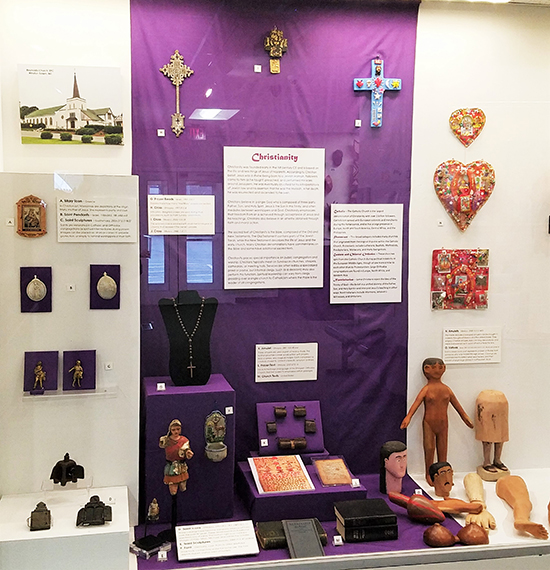
Learn about the featured objects below
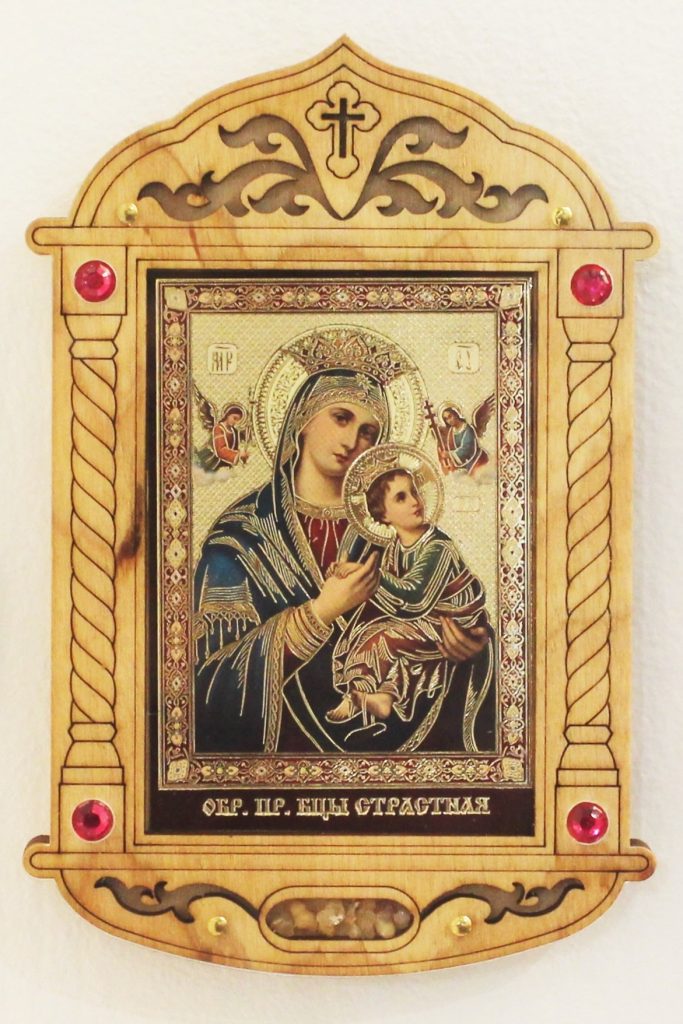
A. Icon
Greece
Education Collection
In Christian art, Madonnas are depictions of the Virgin Mary, mother of Jesus. She represents purity and love.
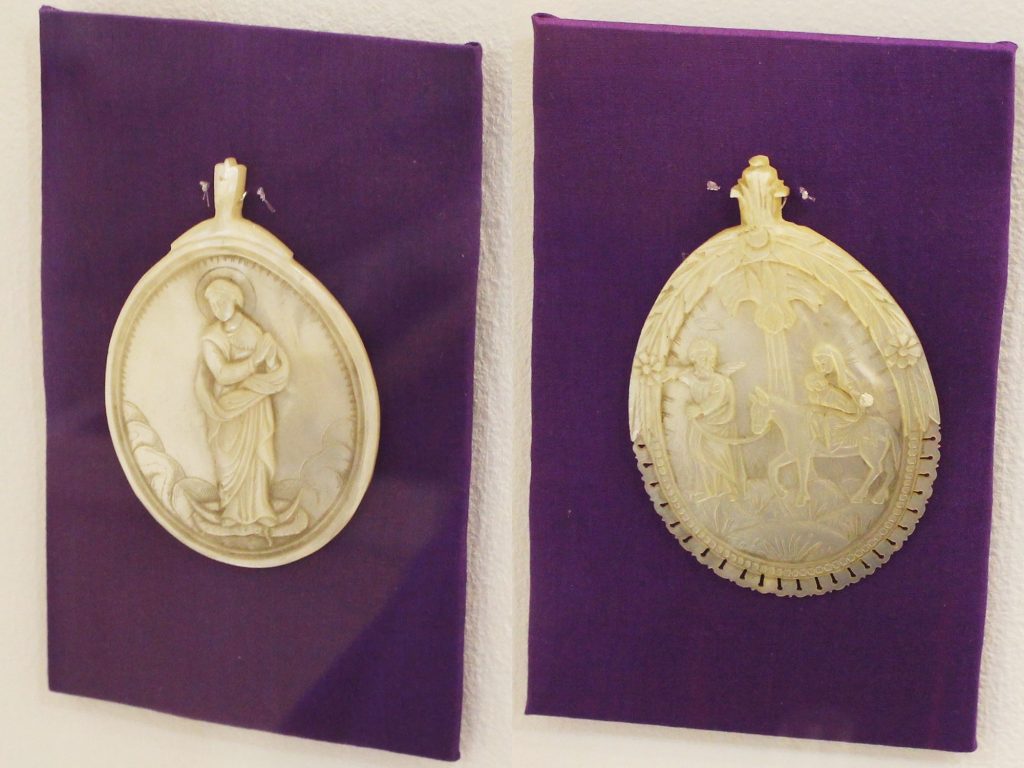
B. Saint Pendants
Israel
1986.04.E.188.a.ed & b.ed
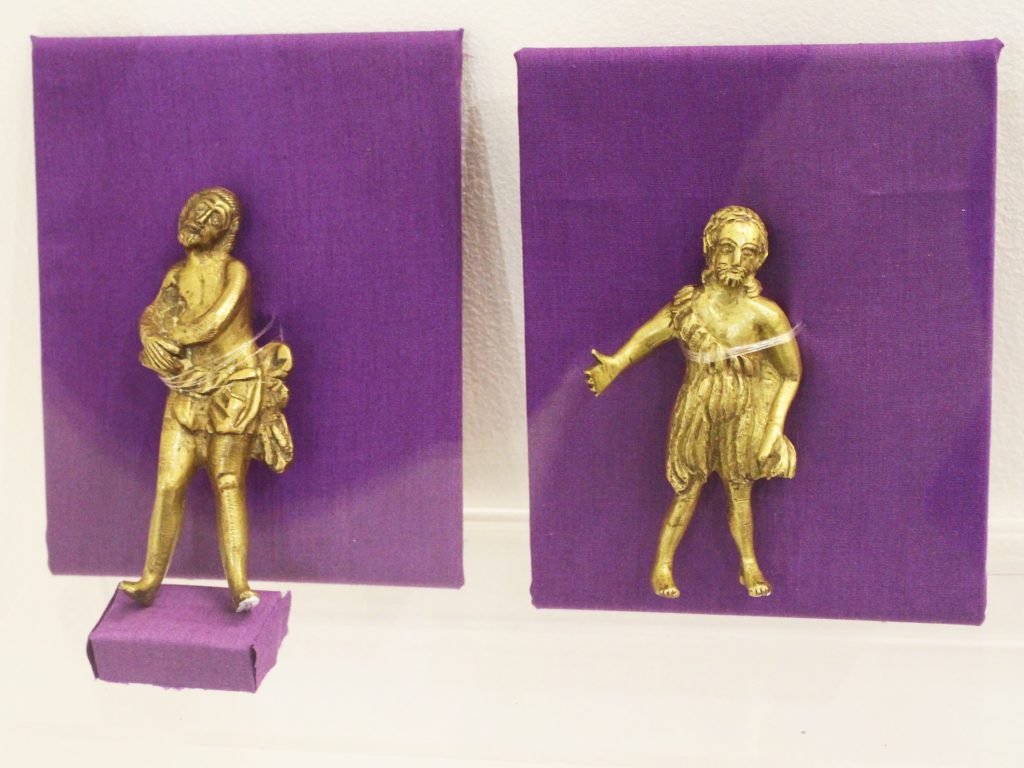
C. Saint Sculptures
Guatemala
2006.07.E.02 & .01
Saints are venerated in Catholic and Orthodox congregations as spiritual intermediaries during prayer. Images can be placed on altars or carried to provide protection or simply to remind worshippers of their faith.

D. Icons
Ethiopia
1992.09.E.1 & 2, 2009.02.E.10
Stone carvings have become a popular religious art form over the last 50 years. These developed from traditional painted icons of saints. The icon on the right contains images of Philip, Mary, Michael, and James the Greater.
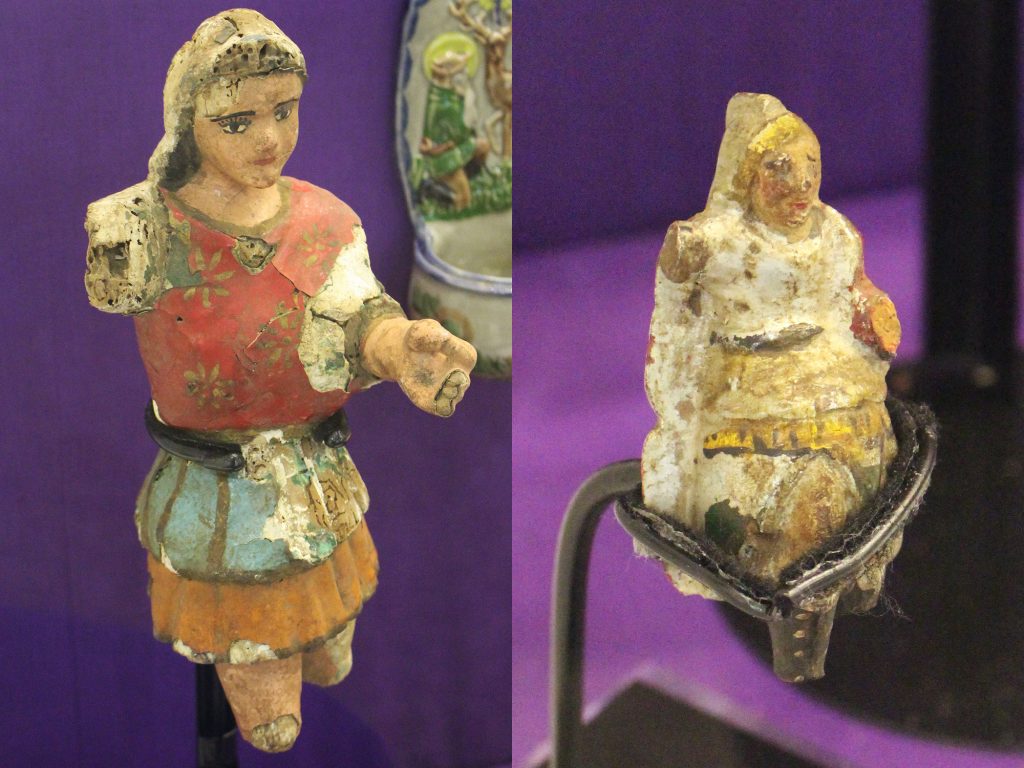
E. Saint Sculptures
Guatemala
2006.07.E.47.ed & 54
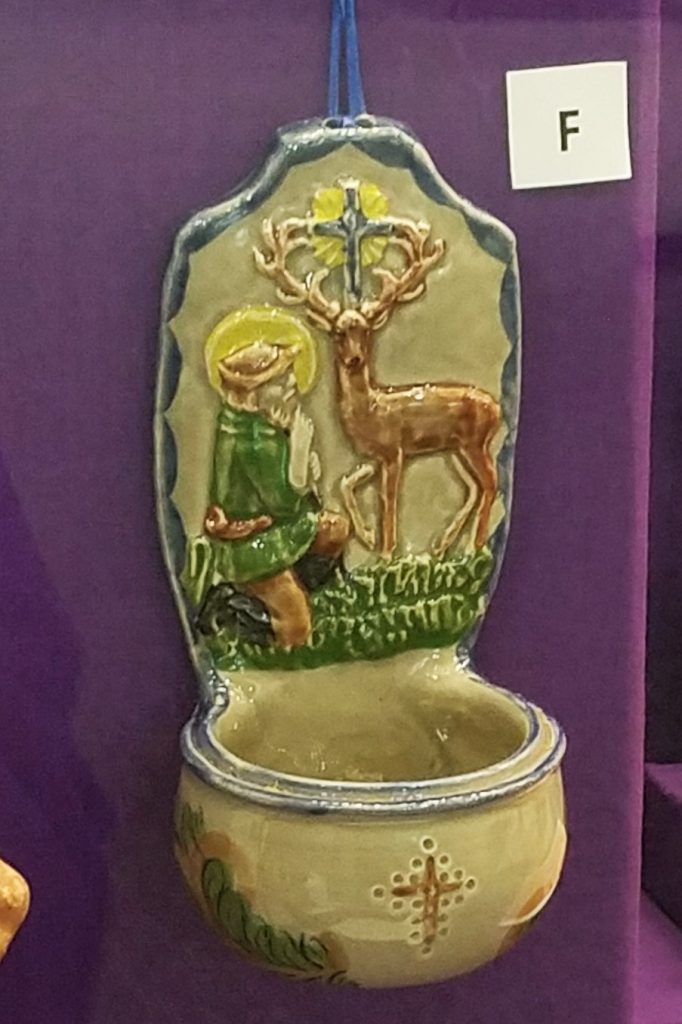
F. Font
Germany
Loan from Dr. Ulrike Wiethaus
Small fonts contain holy water for home use. This font depicts Hubert, patron saint of hunters.
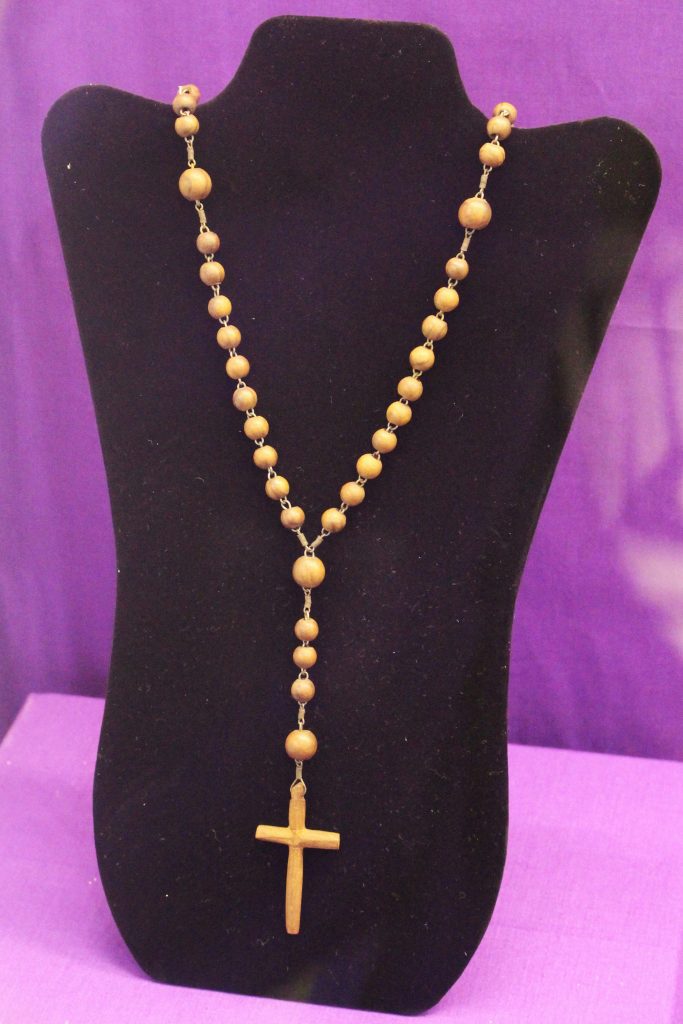
G. Prayer Beads
Israel
1995.13.E.1
Rosaries are used to track how many “Hail Mary” prayers are recited.
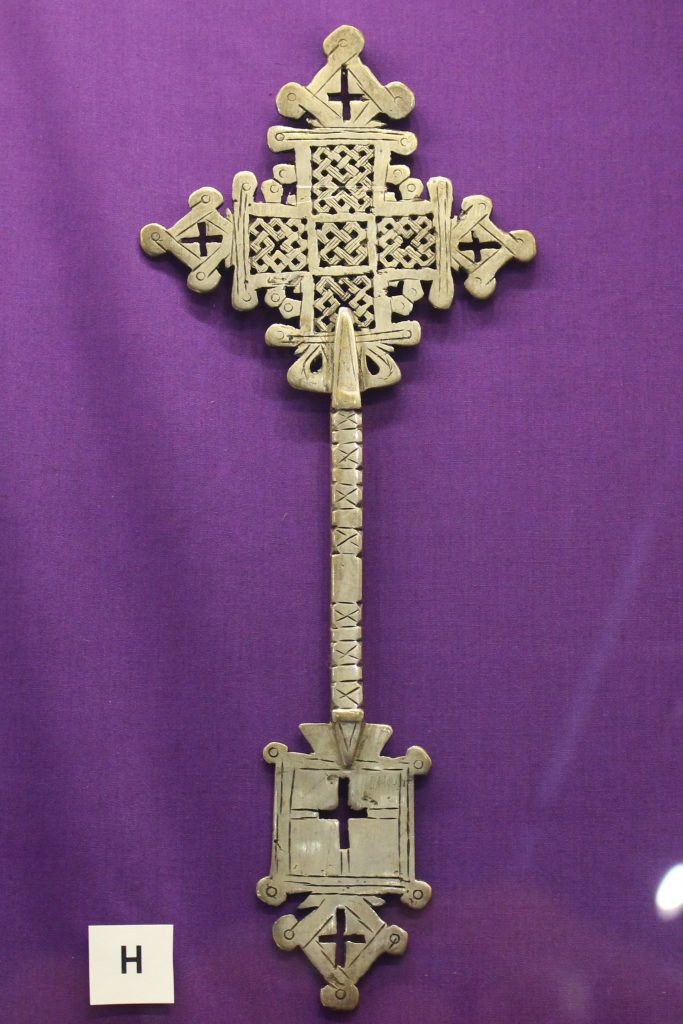
H. Cross
Ethiopia
1997.09.E.4
Intricately designed crosses are used during ritual processions, such as Palm Sunday celebrations.
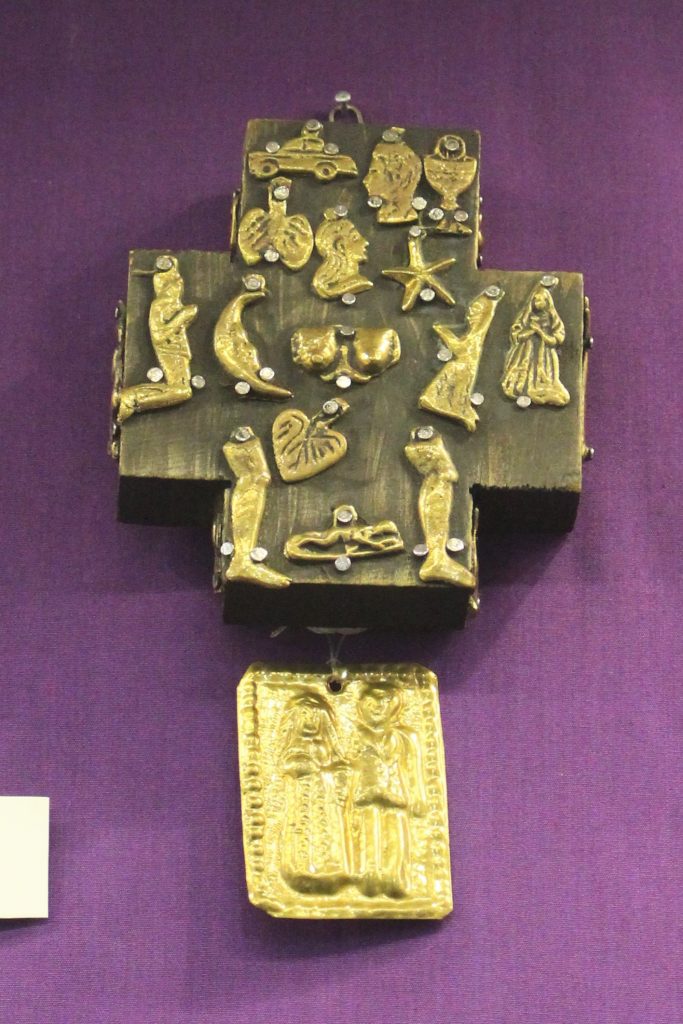
I. Cross
Mexico
2000.10.E.08
This wooden cross is adorned with small metal milagros, charms that represent the owners prayers.
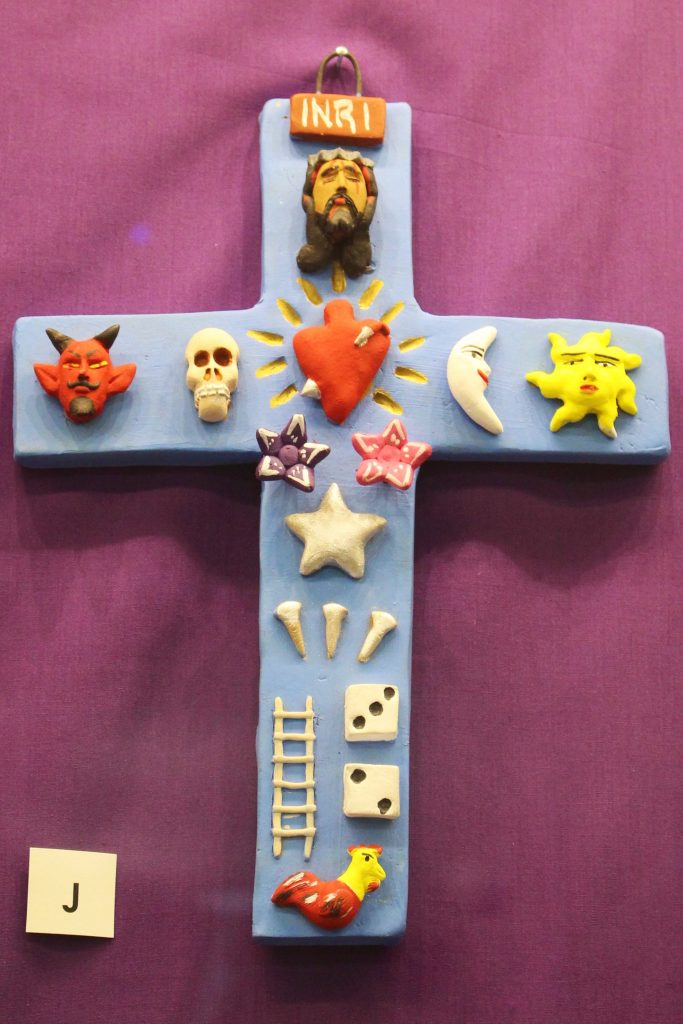
J. Cross
Mexico
2000.11.E.11
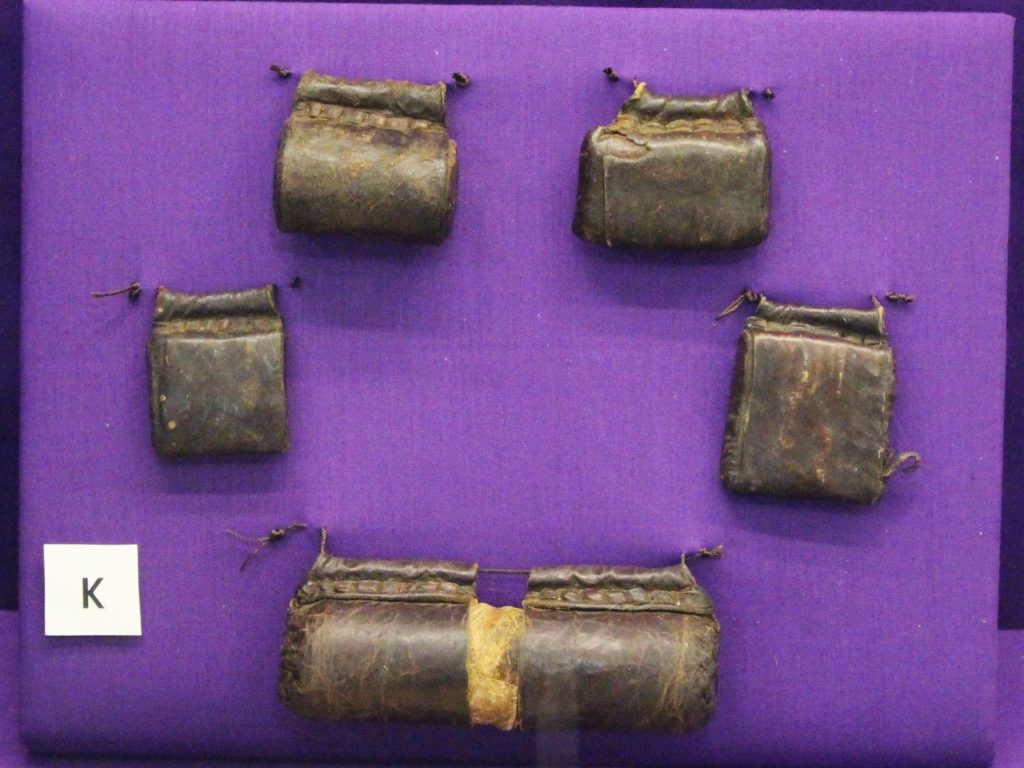
K. Amulets
Ethiopia
2001.10.E.83.a-e
These amulets are used as a part of healing rituals. The leather pouches contain scrolls written with prayers, Biblical verses, and magical images. Each component is carefully chosen to combat a specific symptom or illness.
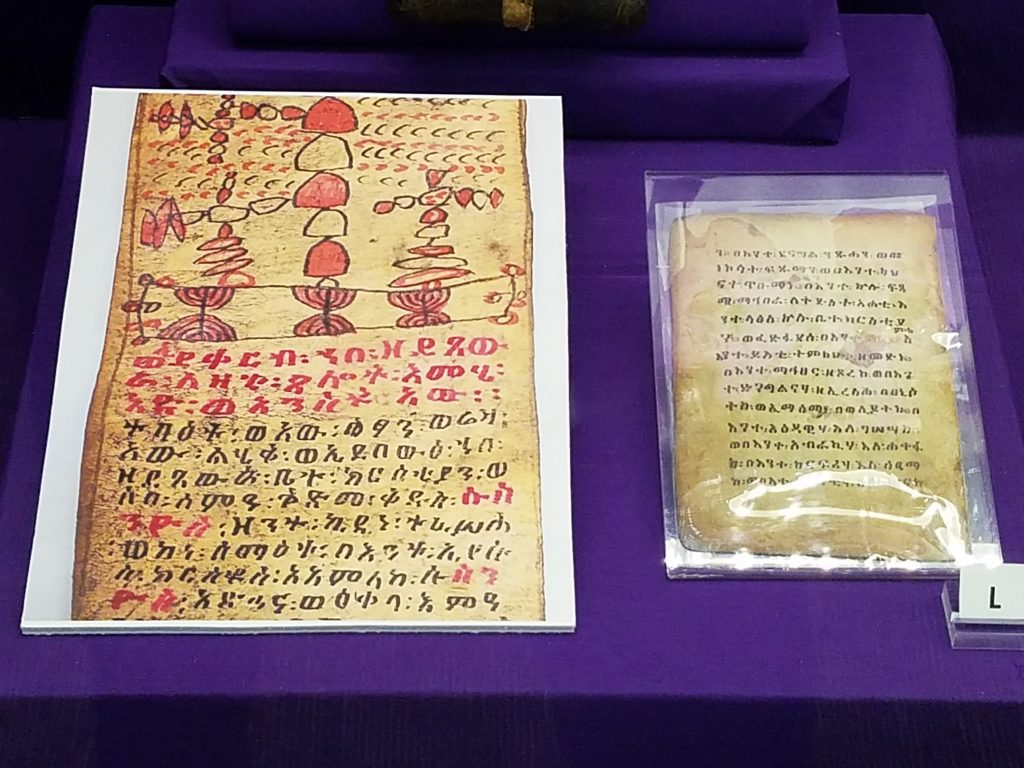
L. Prayer Texts
Ethiopia
2007.07.E.16
Ge’ez is the liturgical language of the Ethiopian Orthodox Church. Red text is used to emphasize certain passages.
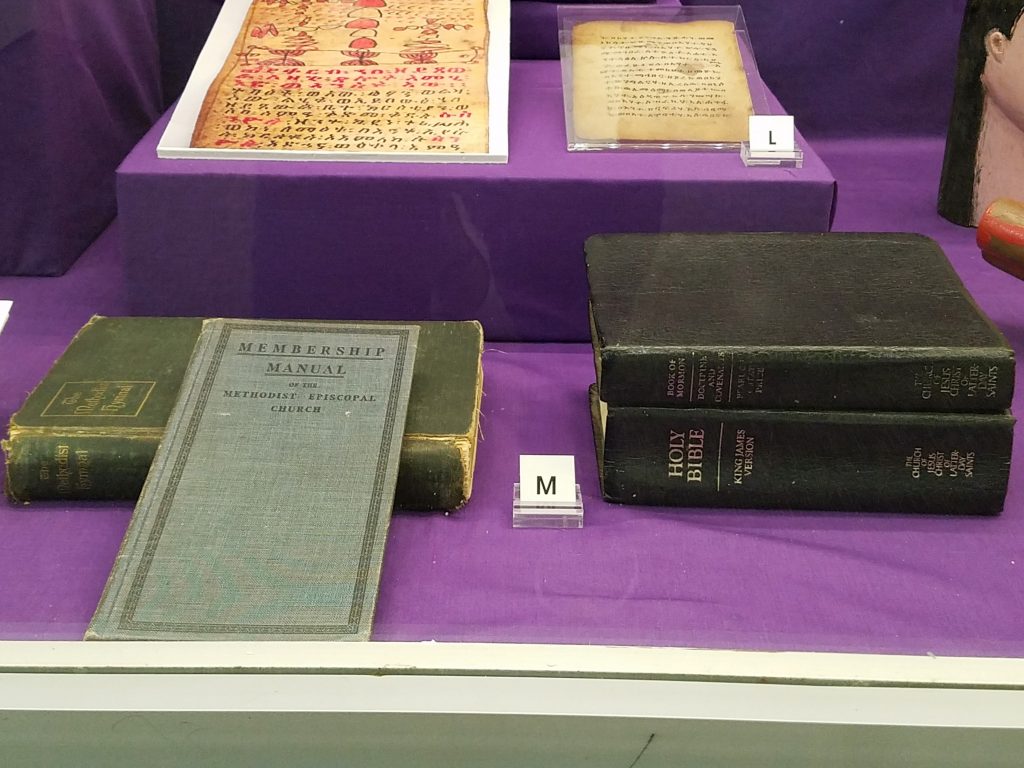
M. Sacred Texts
United States
Loan from Sara Cromwell & Tina Smith

N. Amulets
Mexico
2000.10.E.02 & 01, Education Collection
Pre-made and pre-packaged amulets can be bought in markets across Mexico and the United States. They employ Christian images, eye-catching decorations, and medicinal substances to ward off evil or heal the sick.
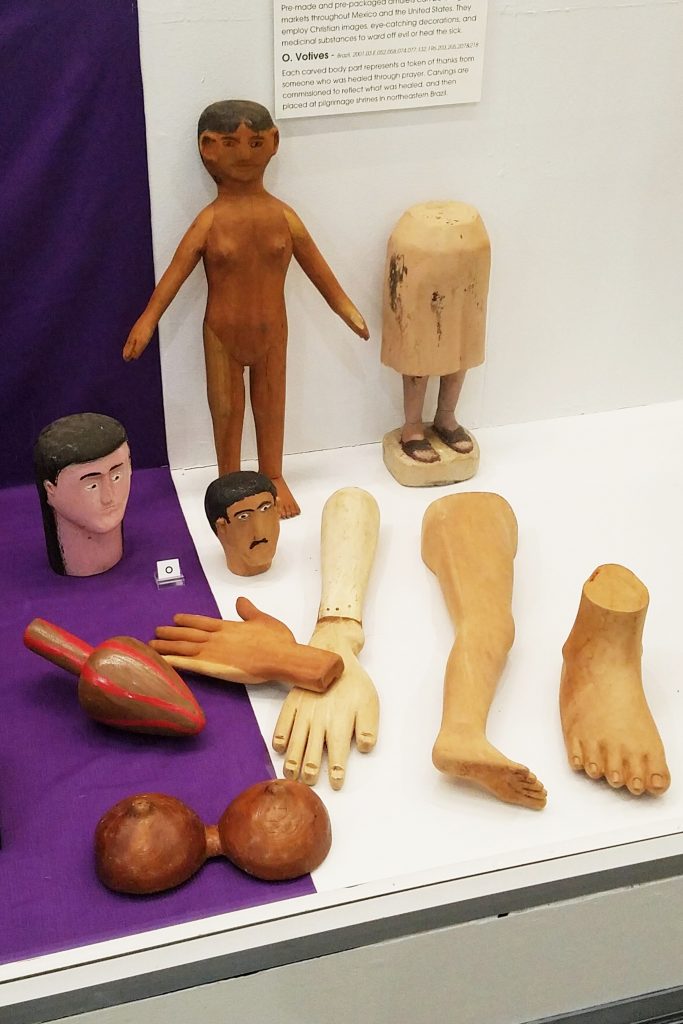
O. Votives
Brazil
2001.03.E.052, 058, 074, 077, 132, 196, 203, 205, 207, 218
Each carved body part represents a token of thanks from someone who was healed through prayer. Carvings are commissioned to reflect what was healed, and then placed at pilgrimage shrines in northeastern Brazil.

